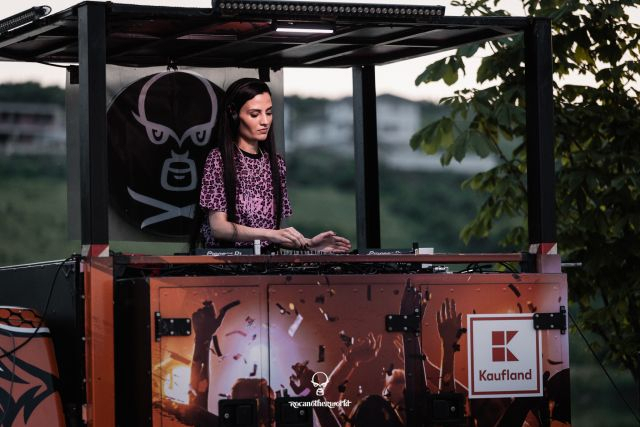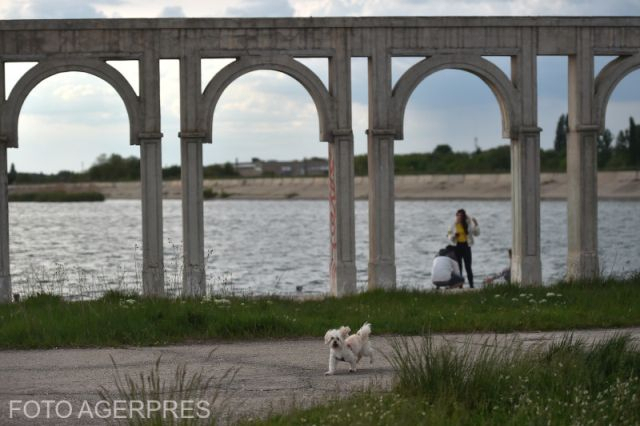The lay public’s quest
for cultural events as social experiences has seen an upsurge after the
COVID-19 pandemic, People are on the lookout for performances, festivals, fairs
and other events. The weather outside is really fine, so the cultural events
have been relocated to outdoor premises, in parks, gardens, public squares or
other areas with a special destination. A telling example of that is provided by
the Rocanotherworld Festival, held on the outskirts of Iasi, a city located in
north-eastern Romania, nearby the Aroneanu Lake, which is an artificial dam
lake in the Moldavian Plains. Alternative and electronic music, artistic manifestations,
conferences, food and merry-making, all that is set to populate the green area
on the lake shores in late June. Patricia Butucel is the director of the Rocanotherworld festival. She has
given details on what Rocanotherworld actually is and on the surprises the
organizers have in store for the public
Rocanotherworld will reach its
7th edition this year and we’re happy we can return to normal, to an
event set to unfold just as it was before the pandemic, with no restrictions. The
2022 edition has got a novelty ready for everyone: we shall have the festival
on the shores of the Aroneanu Lake, it is a new and beautiful space which
perfectly suits this year’s trend. The artists performing at the festival are
local bands, but also national and foreign ones. We will also have a DJ on the
electronic music stage and we’re happy we’re going to get the festival started
with a really fine band, fresh, which is set to grow, and we’re dead positive
it will earn its place among the top alternative rock bands, with Paul Tihan.
We shall also have those of the Suie Paparude band, we will have the launch of
an album, we shall have two album launches, actually, Man to the Moon, and Madalina
Paval with an orchestra. Republic of Modova’s Zdob and Zdub will also come
over, then we will also have Golan, Alternosfera, Kumm, the lineup we’re going
to have will be so diversified, and as an absolute first we shall have a great
international band, the Nouvelle Vague. And we’re delighted because of the
start we’ve taken and because of this trend, an international one, that
including the electronic music stage as well. There will be DJs from our
country but also foreign DJs, from Portugal, we will also a woman DJ from
Ukraine who has relocated to Romania. We will also have an acoustic music
stage, we will have silent disco. We tried, like, to create a mix so that our
public can have as diversified an experience as possible. Zdob and Zdub, we saw
that they were, like, were we to make a chart, they were the favorites for our
public, as for Alternosfera or the French artists, Nouvelle Vague, likewise,
they are among the favorites for the Rocanotherworld public.
Here is the festival director, Patricia Butucel,
once again, this time speaking about the fans of the event, which will soon see
its seventh edition, about the public and the community that has revolved
around the festival.
The Rocanotherworld public, we could say it mainly is a
faithful public since there are a great many people who have been with us since
the inaugural edition, in 2016. They proved they support us and that, actually,
together we are a community. And that also happened in the pandemic years,
since Rocanotherworld was held in 2020, but also in 2021, and we’re clearly
speaking about the pandemic editions, with all sorts of restrictions and, no
matter what the circumstances and the context was, people stood by us. Before,
we used to speak about, I don’t know, some sort of reluctance when we meant
festivals, now we can see people are much mop reopen, much more eager to attend
events and especially outdoor events.
But how did people prepare for Rocanotherworld? What are the challenges
for the organizers and where is the festival’s 2022 edition heading to?
There’s this relaxation and charging side of the event
we want to offer to our public, but we also sought to organize an event which
for them is safe, especially after what
has happened in Bucharest as of late. This week I even went to see the local
authorities with whom we met quite often, we had meetings with the Anti-Drug
Squad, because we want the whole experience to remain a safe one, for our
participants, but also for the volunteers, for the artists involved, and for
all the people who will come to the festival.
Starting last year, Rocanotherworld has embarked on the path of
sustainability, and I’m saying that because we want to meet the Zero Waste set
target. But that is something utopian, for the time being, however, it’s the
least we can do, through organizing and positioning, to help people as well, to
encourage them to have a sustainable behavior and a nature-friendly one as
much as possible. So, as I was saying, as of last year, we have ticked our
short, medium and long-terms goals. We began by the separate collection of
waste. We used sustainable materials for the festival’s production and
signaling system. We replaced the classical promotion, made with OH-type
banners and advertising boards, with the digital OH side. We encouraged and
facilitated the use of alternative means of transport, such as electric push
scooters, bicycles or public transport. In effect, the entire planning of the
festival, the entire organization, was based on prevention, reusing, redesign
and recycling principles. What we’re going to do, actually, for 2022, we shall
prepare 4 days of unique experiences for the Rocanotherworld public, there will be something
people can live during the event. We will
have daytime activities, there will be relaxation areas, games, we will have an
escalation board, we will have silent disco, debates, acoustic stage, live
music, electronic music stages, so we will try to create a universe where
people can come and relax completely.
(EN)

